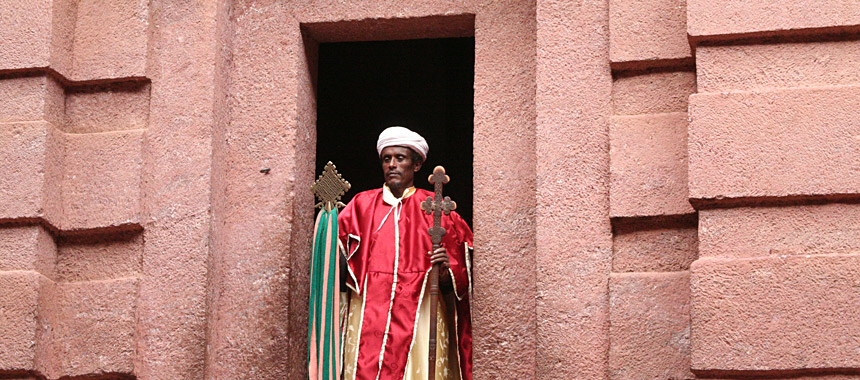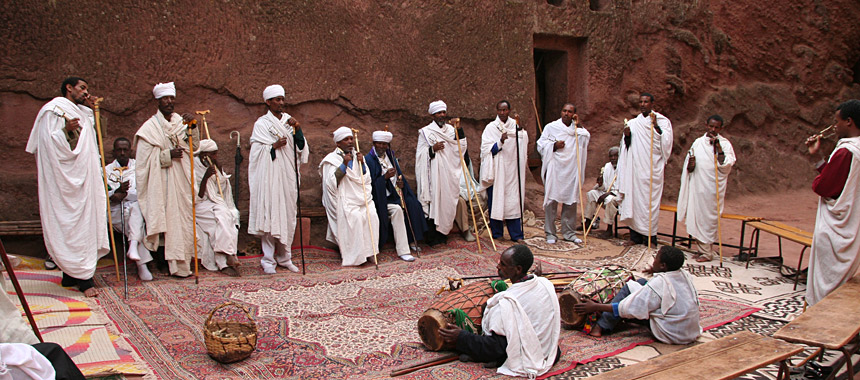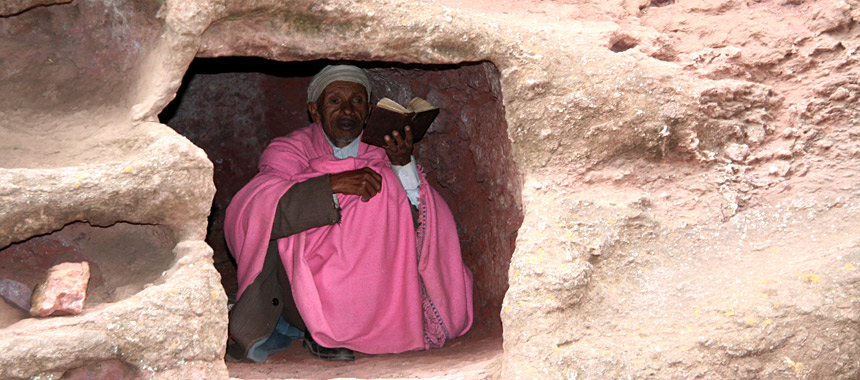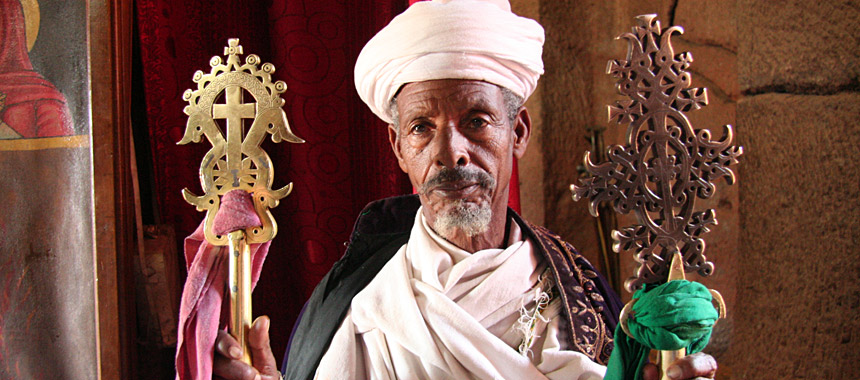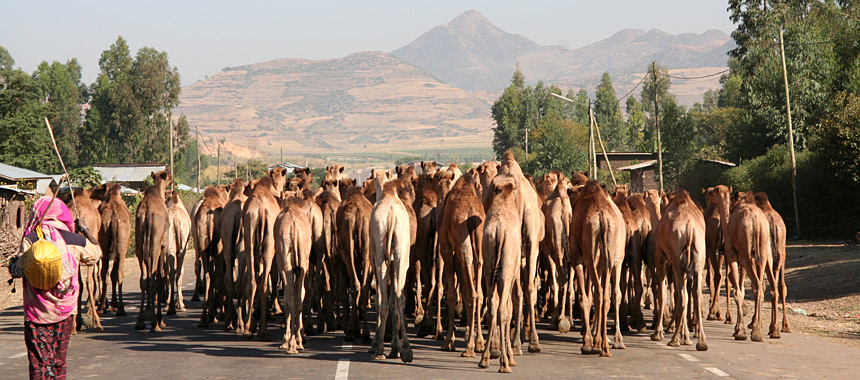|
Welcome to Lalibela Jerusalem of Africa
Lalibela is one of Ethiopia's holiest cities and is a center of pilgrimage of Ethiopian Orthodox Christian. Lalibela was intended to be a New Jerusalem in response to the capture of Jerusalem by Muslims, at that time a pilgrimage to Jerusalem was not possible. Many of its buildings take their name from buildings in Jerusalem, the churches are over 800 years old.
After the downfall of the Axumite Kingdom in the 12th century, the Zagwe Dynasty developed in the highlands of Lalibela, southeast of Axum. Once the flourishing and populous capital city of a medieval dynasty, the passing centuries have reduced Lalibela to a village, it is invisible from the road below, dominated by the peak of Mount Abuna Yosef 4200 m high.
Lalibela is home to one of the world's most astounding sacred sites, eleven rock churches, each carved entirely out of a single block of granite with the roof at ground level. The extraordinary religious architecture and simplicity of life, gives the city a distinctively timeless, biblical atmosphere. The churches of Lalibela were excavated, each church was created by carving out a wide trench on all four sides of the rock, then carefully chiseling out the interior. The largest church is 40 feet high, and the labor required to complete such a task at that time is surprising achievement.
|
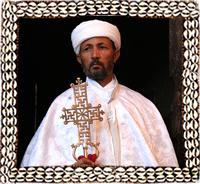 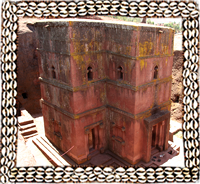 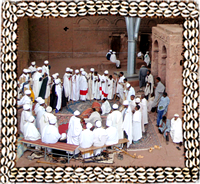 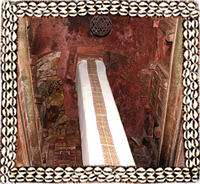
Bet Maryam church contains a stone pillar on which King Lalibela wrote the secrets of the buildings construction. It is covered with the cloths and only the priests may read it. King Lalibela created a holy place with unparalleled beauty, after twenty years he abdicated, to become a hermit living in a cave.
The Ethiopian Christians consider King Lalibela as one of their greatest saints.
The churches have been in continuous use since they were built, first Europeans to see these extraordinary site were Portugese explorers in 1520.
This camouflaged quality that gives the remote settlement its special and enduring place in the life of the highlands, some 800 years ago, safe from the prying eyes and plundering hands of hostile interlopers, a noble king fashioned a secret marvel.
Lalibela, previously known as Roha, named after king Lalibela himself at the end of 12th century. The Lalibela churches, however, silence the most cynical pedants.
These intriguing edifices were hewn out of the solid, red volcanic tuff on which they stand. In consequence they seem to be of superhuman creation, in scale and workmanship.
|

|
